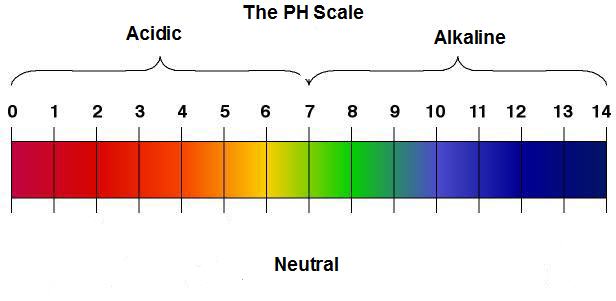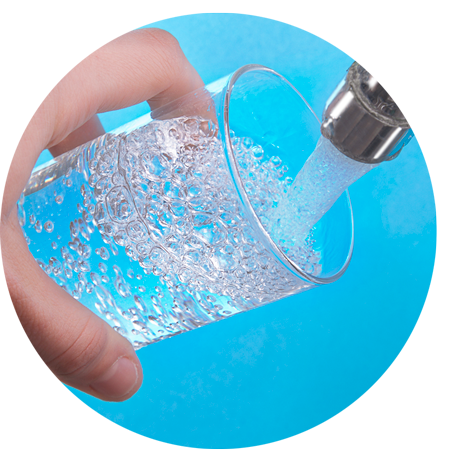pH of water

pH is a measurement of electrically charged particles in a substance. It indicates how acidic or alkaline (basic) that substance is. The pH scale ranges from 0 to 14. The pH of pure water is 7 at 25ºC. In general, water with a pH lower than 7 is considered acidic, and with a pH greater than 7 is considered basic. The normal range for pH in surface water systems is 6.5 to 8.5. In general, a water with a low pH (<6.5) could be acidic, soft, and corrosive. Therefore, the water could leach metal ions such as iron, manganese, copper, lead, and zinc from the plumbing fixtures, and piping.
Low pH corrections
The primary way to treat the problem of low pH water is with the use of a neutralizer. The easiest is to have a PFR tank with limestone inline with the water system, The pH neutralization process occurs as strong acids react with the calcium carbonate in the limestone through intimate contact with small limestone chips. A high surface area is important as is sufficiently long contact time. The reaction is not instantaneous and requires sufficient time. The biggest problem with the use of limestone as an effective treatment process, is the coating of the available limestone surface area with precipitated debris. Once coated with precipitated products, the limestone is rendered useless and must be replaced.
Direct Injection to increase pH
Soda ash (sodium carbonate) and sodium hydroxide raise the pH of water to near neutral when injected into a water system. Unlike neutralizing filters, they do not cause hardness problems in treated water. Injection systems are a point-of-entry system. A corrosion-resistant chemical dosing feed pump injects soda ash or sodium hydroxide solution into the water to raise the pH.
High pH corrections
Acid injection treats water with a high pH by lowering the pH of water to around 7, which eliminates the soda taste and can improve the effectiveness of chlorination. Acid injection is a point-of-entry system. A chemical dosing feed pump made from corrosion-resistant materials injects a solution of acetic acid (white vinegar) into high pH water. Citric acid and alum can be used instead, although they are more expensive. Weak solutions of hydrochloric acid or sulfuric acid also lower pH but these are more hazardous and require special handling.





